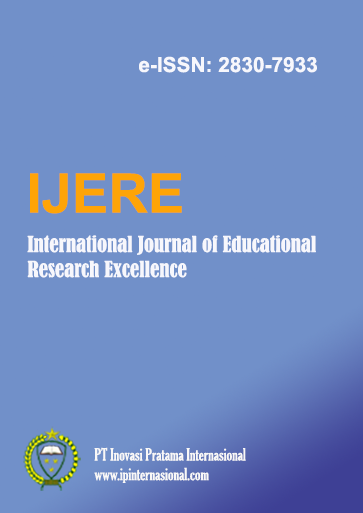The Speech Act Associated with the Fundamental Kinship Relation in Karo Society
Main Article Content
Abstract
This research is intended to analyze about the speech act associated with the fundamental kinship relation in Karo society. The fundamental kinship relation in Karo society is concerned with the Metenget “alertful or paying great attention”, Metami “loving, giving soft words, flattery” and Mehamat “loyal, respectful, honour”. All of these three words must be expressed through words or speech. The method of research is done by using library research or by taking some references from the articles and books. The analysis of this research is found that the speech act which are divided into three, such as locutionary act, illocutionary act and perlocutionary act are utilized in the three fundamental kinship relations. It is not only in the party, but also every where while they are meeting together between anak beru “sisters or her husband”, senina “brothers or the same clan” and kalimbubu “mother’s brother and his wife”. The conclusion is that the types of the speech acts, such as locutionary act, illocutionary act and perlocutionary act are very important in the implementation of the three fundamental kinship relations like metenget, metami and mehamat.
Downloads
Article Details

This work is licensed under a Creative Commons Attribution 4.0 International License.
References
Austin, J.L. (1962). How to Do Things with Words. London: Oxford University Press.
Budiasih .(2016). Illocution on Speech Acts of Foreign Students in Indonesian Learning. Surakarta: Sebelas Maret University.
Fitria, T. N. (2015). This Analysis of Speech Act in Doraemon “Stand By Me” Movie. Universitas Muhammadiyah Surakarta.
Fitria, T. N. (2019). An Analysis of Directive Speech Act Found in “Koi Mil Gaya” Movie.
Journal of Pragmatics Research, 1(2), 89–99. https://doi.org/10.18326/jopr.v1i2.89-99
Handayani, T. K. (2016). Nilai-nilai Karakter dalam Tindak Tutur Illocution dalam Buku WIR BESUCHEN EINE MOSCHEE. Litera Jurnal Penelitan Bahasa, Sastra, dan Pengajarannya, XV(2), 306.
Isnawati, F., Anam, S., & Diana, S. (2015). Speech Acts an Analysis of The Main Character in Shreek Movie Script. Jember: Publika Budaya.
Karo Online Dictionary (2021)
Leech, G. (2011). Prinsip-PrinsipPragmatik (terjemahan M.D.D. Oka). . Jakarta: UI Press.
Lina and Barus (2017). Bentuk Kesantunan Dalam Tindak Tutur Perkawinan Adat Karo. Tangerang, Banten: Mahara Publishing.
Listya, A. (n.d.). (2018). The Analysis of Illocutionary Acts in the President Joko Widodo’s Speech. Journal of Illocutionary Acts.
Mabaquiao. (2018).“Klinik Penulisan Artikel Ilmiah Internasional”. UAD Institute of Scientific Publication.
Moleong, Lexy J, 2012, Metodologi Penelitian Kualitatif, Bandung : Remaja.
Parera, Chatarina Hilda. (2023). Analisis Diksi, Gaya Bahasa, Citraan, dan Tema pada Lirik Lagu dalam Album Manusia Karya Tulus. Surabaya: FKIP UNIKA Widya Mandala.
Searle, J. R. (1969). Speech Acts: An Essay in the Philosophy of Language. Cambridge University Press. Sembiring, Milisi (www.iosrjournals.org p.3)
Yin, RK (2011). Qualitative Research from Start to Finish. New York: Guilford Press.
Yule, G. (1996). Pragmatics. Oxford: Oxford University Press.

